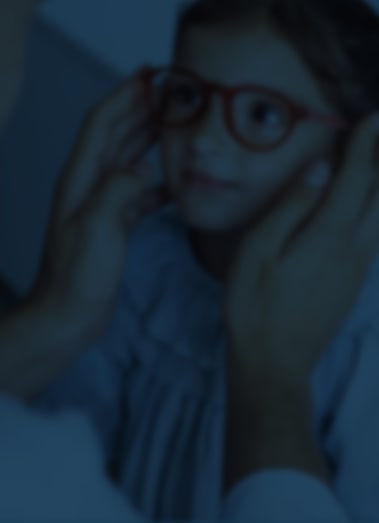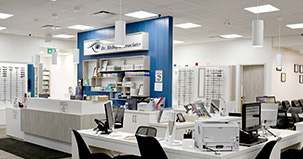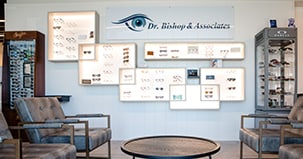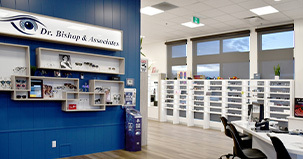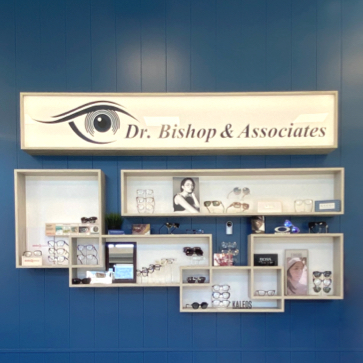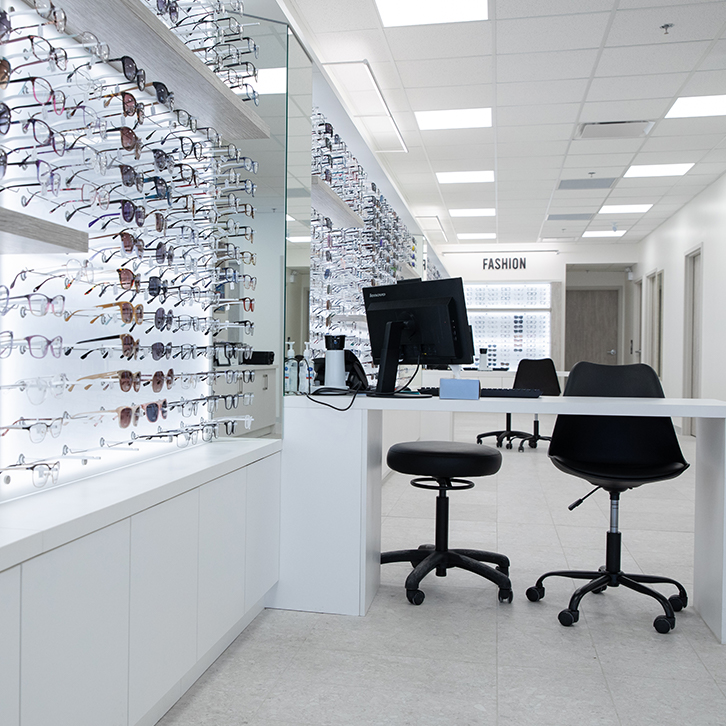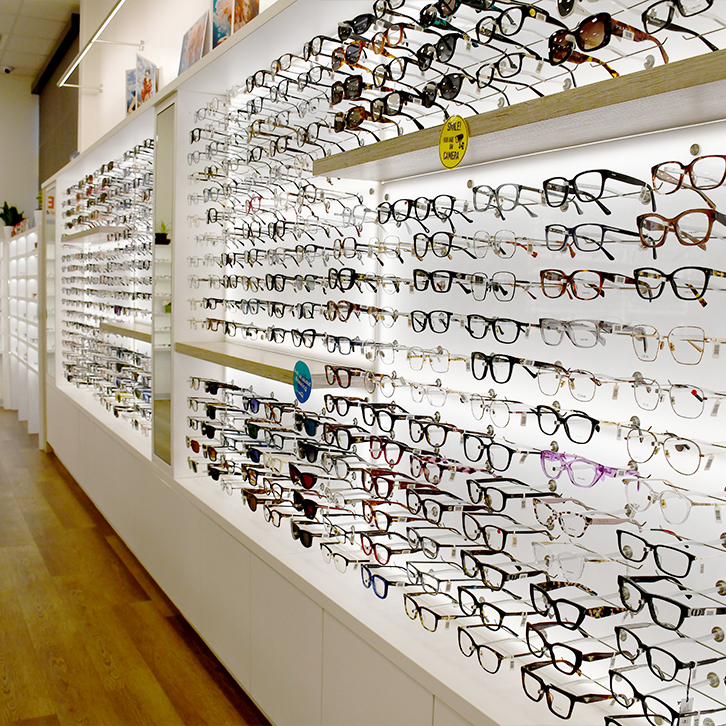Children are visual learners! From the moment they’re born and their visual skills start growing, they explore the world around them with their eyesight. So, when it comes to supporting your child’s wellness, this includes their visual health.
As per recent changes in Alberta Health Care, the province covers a portion of annual children’s eye exams. Our co-pay of only $30 means children can still access comprehensive vision exams at an affordable rate, without cutting back on quality care.
Staying on top of your child’s vision sets them up for greater health success in the future. An annual eye exam is here to make that happen.
Children’s Vision Coverage Under Alberta Health
Earlier this year, the province announced changes in services previously covered by Alberta Health Care, including vision care. This significantly affects all Albertans and eye doctors.
Under this new approach, the province covers a portion of annual children’s eye exams for those 18 and under, provided they have a valid Alberta Health Care. Because of these cuts, many clinics, like our own, require a small co-payment.
These fees vary between practices, however, we believe in the value of accessible healthcare. Co-payment fee varies from clinic to clinic based on the quality of their screenings and testing included.
Pro Tip: You may ask your optometrist about what’s included in your child’s eye test before booking one.
What’s in an Eye Exam?
A comprehensive eye exam goes beyond the basic vision screening that some schools offer. These visits generally include:
- Vision testing: We’ll test how clearly your child can see at various distances.
- Eye tracking and focusing: These tests confirm your child’s eyes are working together correctly.
- Health assessment: A thorough assessment helps rule out potential issues like infection, inflammation, or eye diseases like cataracts or glaucoma.
- Discussion and recommendations: If your child needs treatment, glasses, or follow-up testing, we’ll explain your options to help you make informed decisions.
Even with the changes to Alberta’s healthcare plan, one thing remains the same: there is no coverage for children’s eyeglasses or contact lenses.
If you have private insurance or employer benefits, this usually includes any dependents you might have, such as your children. Depending on the details of your insurance plan, your insurer may offer partial or full reimbursement for children’s prescription eyewear or contacts.
The Importance of Children’s Eye Exams
In the classroom, about 80% of learning focuses on visual tasks, like reading, writing, and interpreting visuals such as charts and graphs.
A child might have visual concerns and not even know it, or they may have trouble expressing their difficulties. Failing to address the situation can impact a child’s ability to learn, academic performance, and confidence.

Annual monitoring allows us to screen for any concerns you or your child may have and address these issues appropriately. This supports your child’s school life, their interactions with friends and classmates, and even their ability to perform certain everyday tasks.
Common vision concerns that we see in children include:
- Myopia: Difficulty seeing distant objects clearly.
- Hyperopia: Trouble focusing on nearby objects, especially when reading.
- Astigmatism: blurry vision at all distances because of an irregularly curved cornea.
- Amblyopia (lazy eye): Reduced vision in one eye that can worsen if not treated early.
- Strabismus (crossed eyes): Misalignment of the eyes, which may affect depth perception.
Children’s eyes undergo rapid growth and change throughout childhood and adolescence, highlighting the importance of early detection and treatment.
For instance, a condition like amblyopia is much more responsive to therapy during early childhood, when the visual system is still developing. Without timely management, these conditions can lead to more serious, or even permanent, vision issues.
How Often Should Children Have an Eye Exam?
The recommended frequency for eye exams depends a bit on your child’s age. Here’s a better breakdown of the timeline:
- Infants (6–12 months): Babies can have their first comprehensive eye exam as early as 6 months, and we recommend yearly exams from this age onward. Early assessments focus on visual development, eye alignment, tracking, and focusing abilities to ensure your child’s eyes are developing properly.
- Preschool (3-5 years): Yearly eye exams continue to play a vital role during the preschool years. At this stage, we assess visual acuity, depth perception, and other key visual skills needed for early learning and school readiness. At this stage, we assess visual acuity, depth perception, and other key visual skills needed for early learning and school readiness.
- School age (6–18 years): Once your child starts school, yearly eye exams become essential. Since children’s eyes grow and change so rapidly, these annual check-ups are key for maintaining clear vision and catching potential problems early.
Signs Your Child Might Be Experiencing Vision Problems
As a parent, here are some signs to watch for that suggest your child might be experiencing vision-related concerns:
- Frequent eye rubbing or squinting: If your child often rubs their eyes or squints, even when they’re not tired, this could be a sign of eye strain, blurry vision, or an underlying refractive error.
- Sitting too close to screens or holding objects close: Children with vision issues often compensate by sitting very close to televisions or holding books extremely close to their faces.
- Difficulty maintaining focus or tracking objects: Struggling to follow a moving object or an unusual delay in developing hand-eye coordination might point to visual tracking issues or other developmental concerns with vision.
- Frequent headaches or eye pain: Persistent headaches or complaints of eye discomfort, especially after reading, writing, or using electronic devices, may suggest that your child’s eyes are working too hard to compensate for a vision issue.
- Head tilting or covering one eye: Tilting the head at an angle or covering one eye while focusing could suggest issues such as double vision or misalignment of the eyes.
- Poor performance in school or reluctance to read: A noticeable drop in school performance or avoiding tasks like reading is often linked to difficulty seeing fine details, which may affect your child’s ability to absorb information in the classroom.
Book Your Child’s Eye Exam Today
Everyone benefits from routine eye exams, especially children. Staying on top of children’s growing eyes helps set them up for lifelong visual success.
At Dr. Bishop & Associates, we’re proud to offer comprehensive, family-friendly eye care in Calgary. Our experienced optometrists provide thorough exams and valuable guidance to help your child achieve sharp vision. Connect with our team to book your child’s routine eye exam today!





